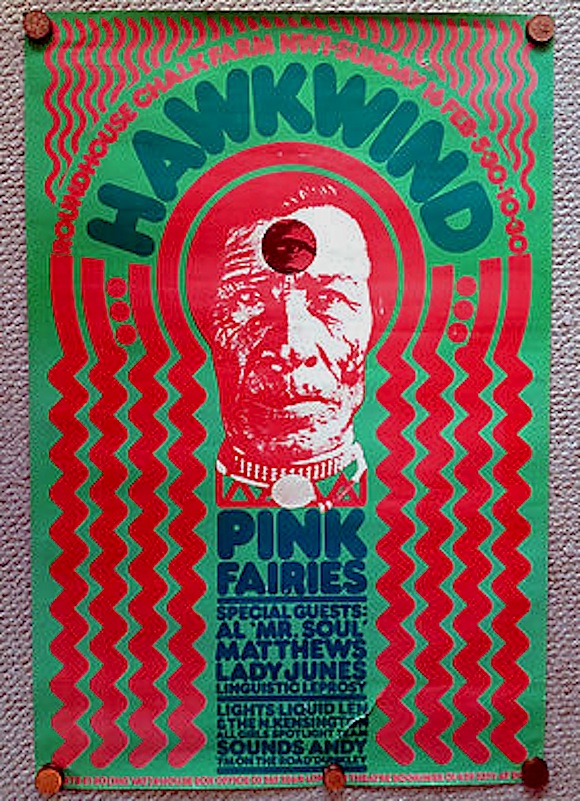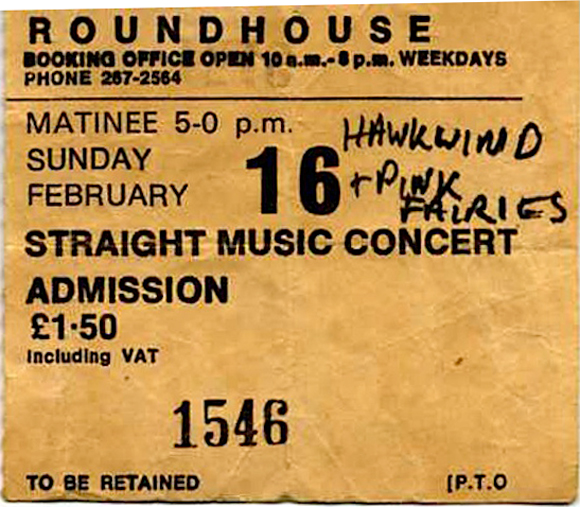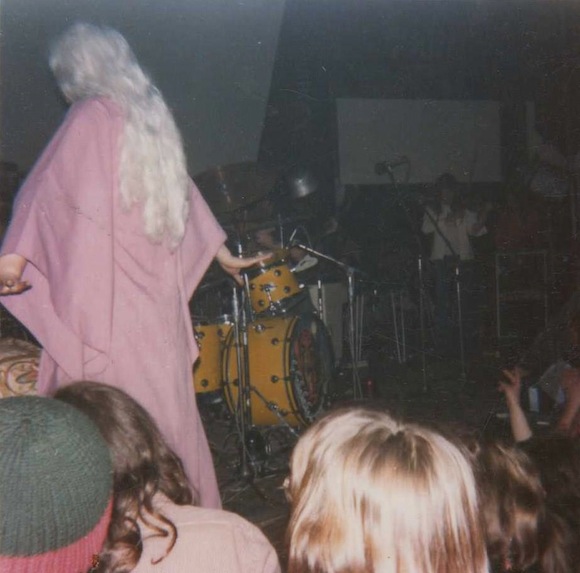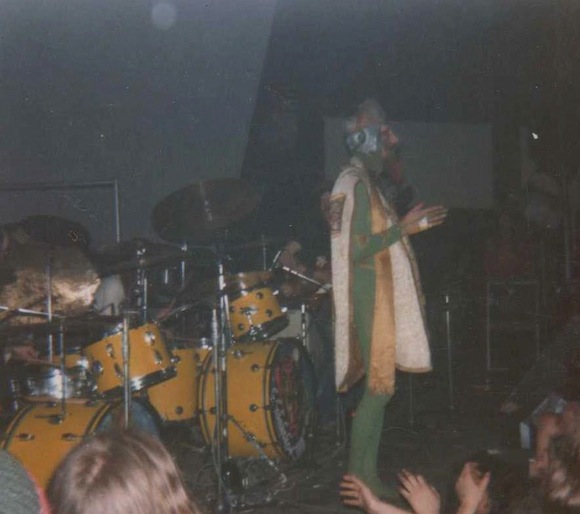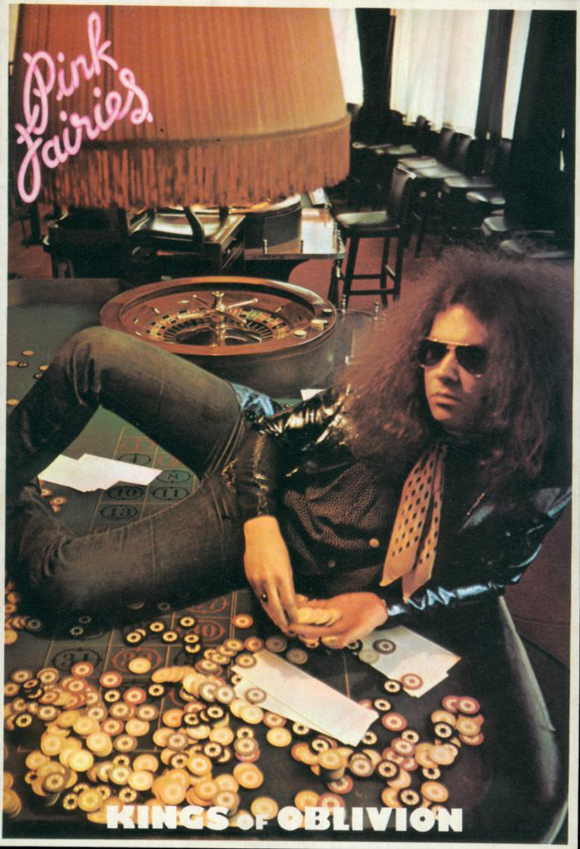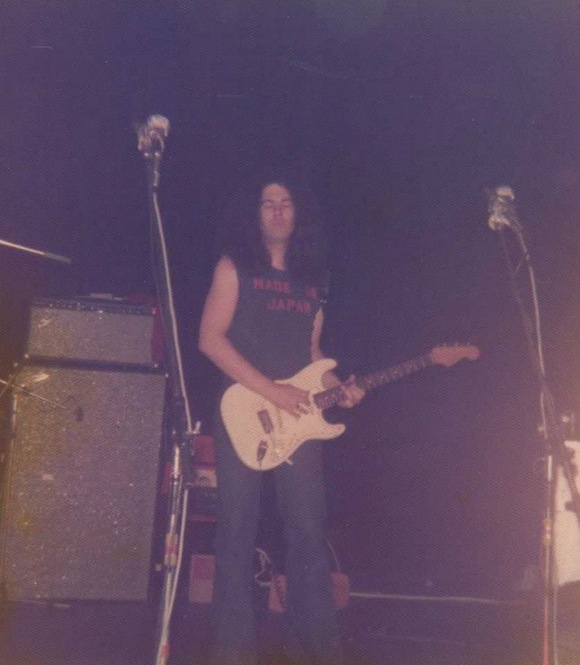Flashback to Hawkwind + Pink Fairies at The Roundhouse 1975 as Nik Turner’s trademark claim sparks hostilities
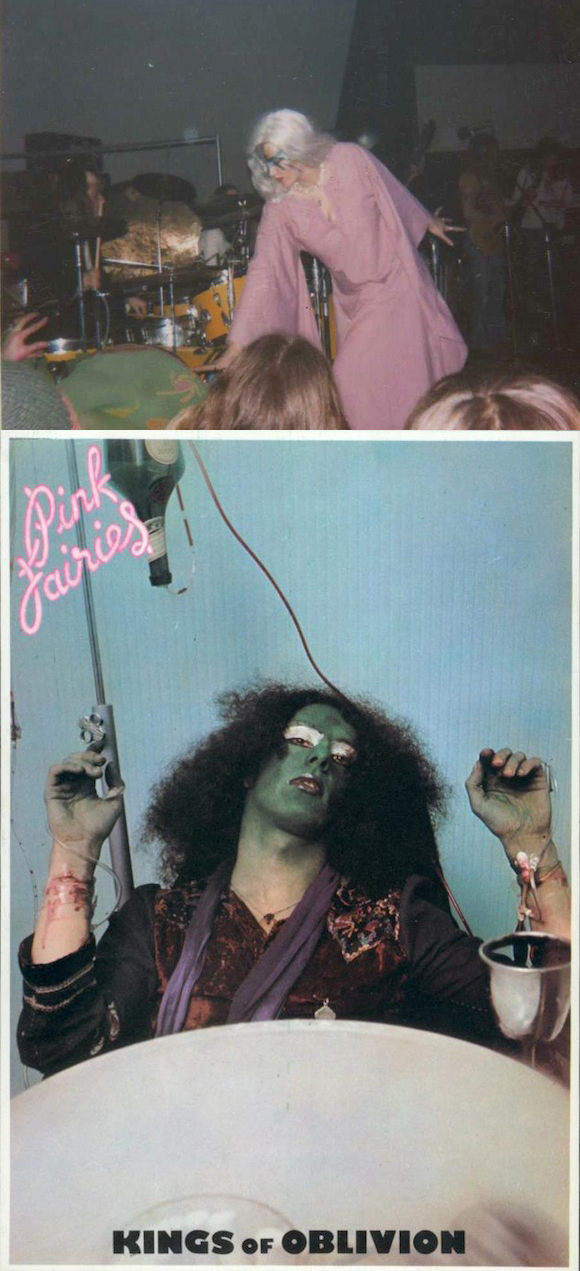
//Top: Stacia Blake weaving her magic onstage at The Roundhouse in 1975. Photo: Paul Apperley. Above: Peter Lavery's photo of Russell Hunter from the insert in the Pink Fairies' 1973 album Kings Of Oblivion. Posted on the Facebook Portobello Shuffle group by Ian Nottnotw Edmondson//
Sad to witness Hawkwind, the great British musical force which has carved out a unique position outside of the mainstream music business over several decades, dragged into a tawdry row regarding ownership of the group’s name.
The dispute has been sparked by saxophonist/flautist/sometime frontman Nik Turner. It seems he is trademarking the group’s name as a touring entity in the US, even though he hasn’t been a member for a long time.
Turner was in the line-up during Hawkwind’s greatest period, 1970-76, and returned sporadically until a parting of the ways with Dave Brock, generally acknowledged as Hawkwind’s founder and the band’s one constant, at the helm for all 44 years of its existence.
If scans of signed US documents circulated online prove to be authentic, Turner’s registration in the US – where he has just toured under the banner Nik Turner’s Hawkwind – denies the existence of any other entity of that name operating in the field of live performance. This undercuts his claims in the American press that he wants to spread peace and harmony by invoking Hawkwind’s name and has enraged a section of the fan base.
Brock meanwhile has cancelled his Hawkwind’s American tour on the basis that he – at 72, a year younger than Turner – is suffering from a stress-related illness as result of the dispute.
This is all a long way from the relative harmony in the ranks when I fell under their spell as a teenager. I saw Hawkwind a few times, at the Edmonton Sundown or the Dagenham Roundhouse in north-east London and at a free festival in Harlow New Town, Essex, but one particular concert in February 1975 when the ensemble played Camden Town’s Roundhouse with the Pink Fairies stays in the memory.
Underpinned by a rhythmic discipline aligning the musicians with their Krautrock labelmates on United Artists, the trademark “heavy” (as the times would still have had it) lyrics were capped by the performance art of Stacia Blake, whose presence has too often been consigned to sexist commentary.
Her earthy, intergalactic femininity acted as a counterpoint to Turner’s acidic cavorting (he would often perform in a green bodysuit with frog mask in this period), bass-player Lemmy’s rocker attitude, the graphics of Barney Bubbles – including a fabulous poster and decorated equipment – and Jonathan Smeeton’s lightshow (as Liquid Len And His Lensmen) to create an audio-visual extravaganza as potent as any live musical event I have subsequently experienced.
I was close to the front by Lemmy’s bass bin and don’t think I have been the same since.
While trawling last week through the depressing commentary over the Turner trademark furore on Facebook I was delighted to find photographs taken that night by fellow audience member Paul Apperley, who tells me: “I was 15 at the time; it was a big adventure to travel to London from Birmingham and get back for school the next day!”
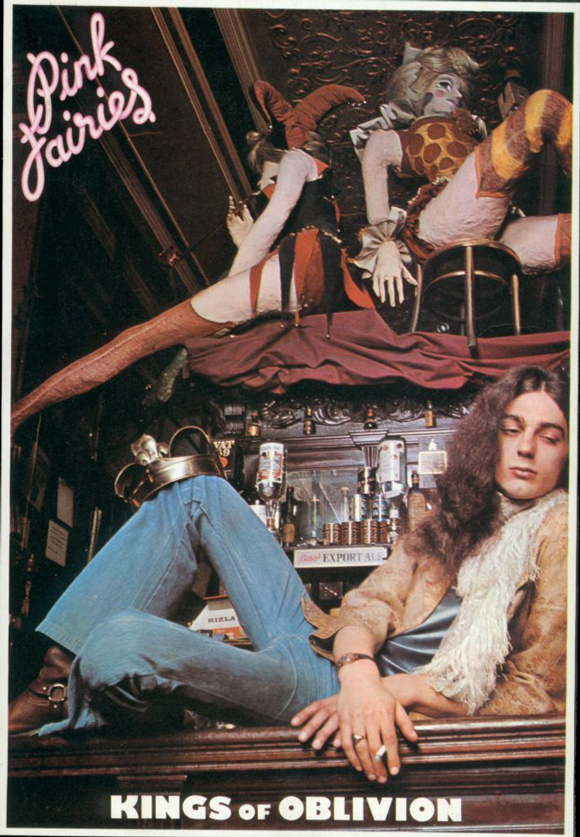
//Duncan Sanderson in what looks to me like the Island Queen pub, Islington, Kings Of Oblivion insert. Photo: Peter Lavery//
Also on the bill were black soul folkie Al Matthews and west London scenester Lady June, whose “Linguistic Leprosy” included the magnificent oddball Lol Coxhill and The Police’s Andy Summers (introduced as “the boy wonder guitarist”, he was stitched into the underground’s fabric as the basis for one of the characters in Jenny Fabian’s book Groupie).
The main support that day (the performances hosted by DJ Andy Dunkley lasted from 3pm to 11pm) came from Hawkwind’s west London confreres the Pink Fairies, who had an equally wonderful grasp of visuals, as these images from their 1973 album Kings Of Oblivion convey.
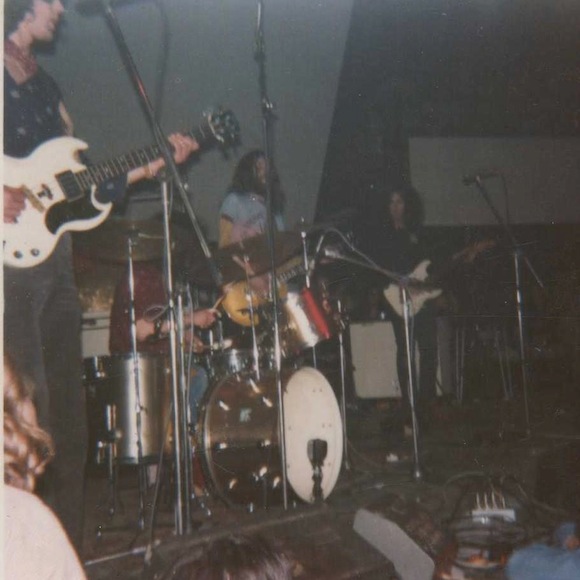
//The Pink Fairies, including Larry Wallis in Made In Japan tee (top), in action at the Roundhouse, 1975. Photos: Paul Appersley//
Apperley has also posted photographs of the Fairies onstage on that February day as well as from the return match with Hawkwind at the Roundhouse the following July, at which I was also present. Lemmy was gone and Blake was preparing her exit, though I don’t recall there being any loss of power in the performance.
Like Hawkwind, and as displayed on such releases at the Kings Of Oblivion, the Pink Fairies offered an accessible alternative to the addled rock scene of the mid-70s for youngsters like me. Their greasy exuberance and freak-style way with make up and visual expression acted as a parallel to the fag-end of glam and, as we all know now, formed one of the paving stones to punk. In the Fairies and Hawkwind audiences could be found the likes of John Lydon, Jah Wobble, Mick Jones and Shane MaGowan.
I hope Brock is recuperating and that he will soon return to leading his raggedy-arsed collective defiantly onwards for many years to come. Nik Turner was very helpful to me when I was working on my Barney Bubbles book. I’d like to think that he will quietly drop the trademark claim and focusing on playing music under his own name; he has a huge catalogue of work via such outfits as Sphynx, Inner City Unit and Space Ritual.

